Some bird species can be found on the Oregon Coast year-round. Others stop by briefly on their spring or fall migrations. And then there are birds that only winter here, including this hooded merganzer fanning his feathers. If you want to see wintering waterfowl, the time is now.
A pair of binoculars will help you spot them. Look for waterfowl in the ocean and in the estuaries, including open water on some NCLC properties.
Neal Maine, who photographed all these birds on the northern Oregon Coast, urges you to take a day to look for birds in a variety of habitats, from the lower Columbia River to estuaries along the coast. “We live in a habitat-rich environment,” Neal says.
“The richness of the habitat is what makes these birds available for us to see.”
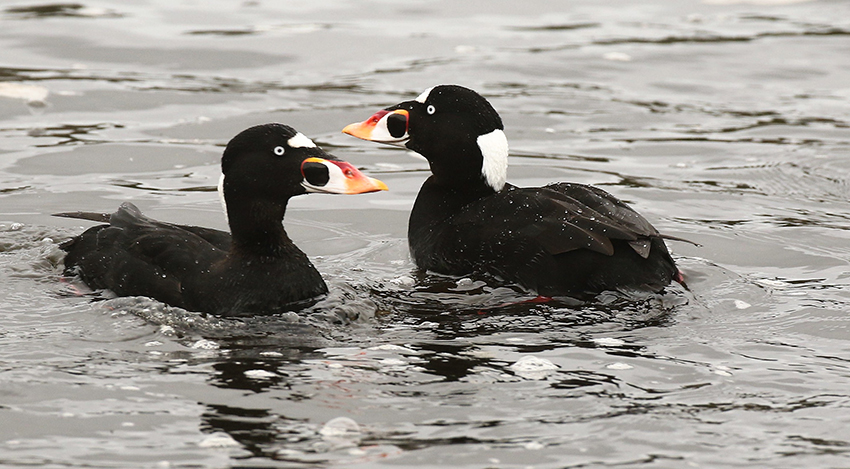
Surf scoters
Neal urges people to resist the temptation to catch a glimpse, make an ID, and move on. “Stay with these guys a little bit, to see the full variety of their behaviors.” Surf scoters, for example: “The way they ride the waves, their timing: it’s really fascinating.”
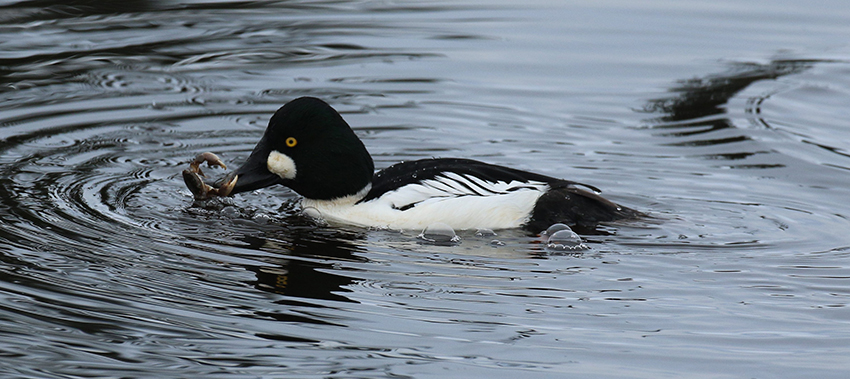
Common goldeneye
Neal photographed this goldeneye, with a baby crab in its bill, in the estuary right across US 101 from the NCLC office in Seaside. “All I’ve ever seen them catch in that location is crabs. Doesn’t mean they don’t eat other things, but crabs are what they catch.” They might dive 30 times, he said, before they come up with a crab: to see that, he says, “You just have to stay with them a little bit.”

Harlequin ducks
Harlequin ducks migrate, but not north to south: in summer they head to small streams in the mountains to nest. Look for them in winter in turbulent waters close to shore such as the Cove in Seaside, where Neal caught these ducks, or the large rocks just inside the mouth of Tillamook Bay at high tide.

American widgeon
Neal normally sees widgeons in the estuary–they are the dominant bird in the estuary this time of year, he says–but he caught this raft of widgeons offshore at the Cove.
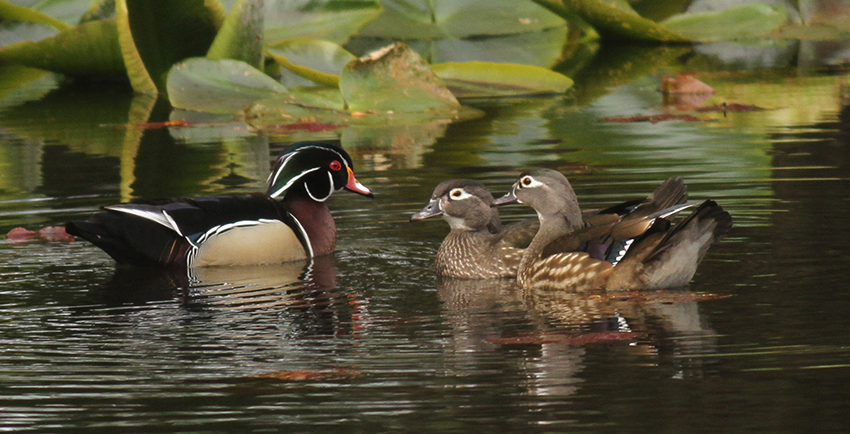
Wood ducks
Look for wood ducks on freshwater, in small ponds or streams. With their brilliant coloring, Neal says, “The males tend to get all the attention, but the females are really cool too.”
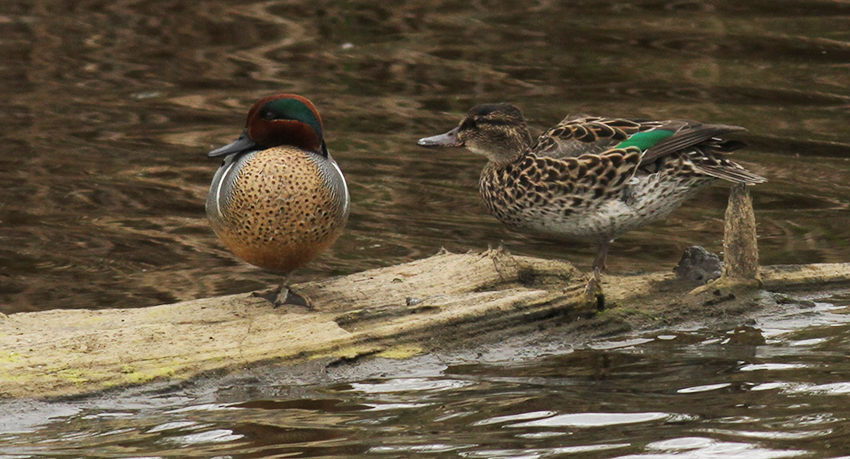
Green-winged teal
You’re most likely to see waterfowl on the water. But stay with them long enough, Neal says, and you’ll see them come out of the water: “Then you kind of see a new world.” He saw this pair of teals in a little mitigation pond behind Fred Meyer in Warrenton. “If you see water, look for birds” Neal says, “even in busy places like the mall.”
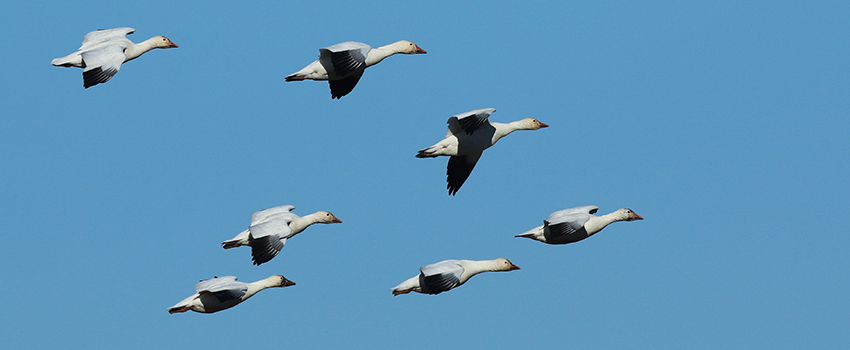
Snow geese
“As soon as they lift off,” Neal observes of geese and ducks, “immediately they get into some kind of poetic or artistic pattern.”

Ring-necked duck
Ring-necked ducks tend to flock in small groups of four to eight birds, Neal says.

Northern pintail
‘There’s one place on the Columbia where I can find pintails by the hundreds,” Neal says. “They have such diverse behaviors. Each one has its own way of tipping upside down. And the details, the feather pattern on the back and the tail: it’s spectacular. Each one is kind of a work of art.”

Northern shoveler
“These guys are almost comical, the way they go about streaking through the water with that big flat bill,” Neal says of shovelers. He photographed this pair in the Necanicum Estuary in front of Seaside High School. Among wintering waterfowl, shovelers “show a whole different set of behaviors and exploit different aspects of the aquatic habitat.”
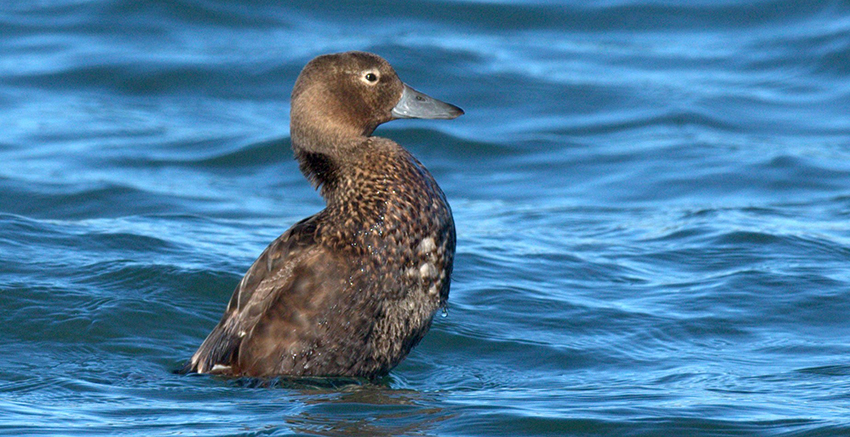
Steller’s eider
“In your wanderings, you never know when you’re going to see a once-in-a-lifetime bird,” Neal adds. This Steller’s eider, for example: she showed up last winter in the ocean off Seaside when, according to the bird guides, she should be in the Aleutian Islands. Neal spotted her riding the waves with harlequin ducks at the Cove. The male eider, like the male of many bird species, is much more brilliantly colored than the female. But Neal’s close-up demonstrates that she has an exotic beauty of her own.
Comments